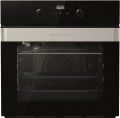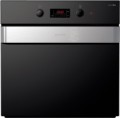Number of modes
The number of cooking modes provided in the design of the oven. In this case, the cooking mode means the general opertaion mode — for example, “heating”, “heating + convection”, etc. Accordingly, this indicator strongly depends on additional equipment (see "Features"). However, even in similar models, the number of modes may be different. In general, the
more cooking modes, the more cooking options, the easier it will be to choose the optimal mode for a specific situation.
Number of door glasses
The number of layers of glass in the viewing window of the oven door.
Modern models, usually, have from 2 to 4 glasses. The
more glasses, the less heat loss and the more economical the oven, but this parameter also affects the cost.
Door closer
The presence of an
automatic door closer in the design of the oven.
Such a device is responsible for pulling the door when closing, and in some models, when opening. The idea is that the user does not need to close/open the door completely — just pull it to the right place, and then the door will be smoothly brought to a fully open or closed state by the door closer. Such a system performs two functions. Firstly, it reduces to almost zero the risk of leaving the oven not completely closed (which is fraught with various unpleasant situations): the auto-closer is usually able to attract even a fairly wide open door. Secondly, such a device provides a very smooth opening and closing, without shock, which has a positive effect on the service life of the entire oven.
Dimensions (HxWxD)
In the case of ovens, the dimensions determine not only the sizes, but also the conditional form factor and the possibility of installing models. Dividing by height, the devices can be
compact(low) for installation in hanging cabinets and
full-sized — classic ovens for installation under the countertop. As for the width, in addition to
standard models of 60 cm, there are
narrow (45 cm) and
wide (90 cm) models to interact with similar wide hobs.

